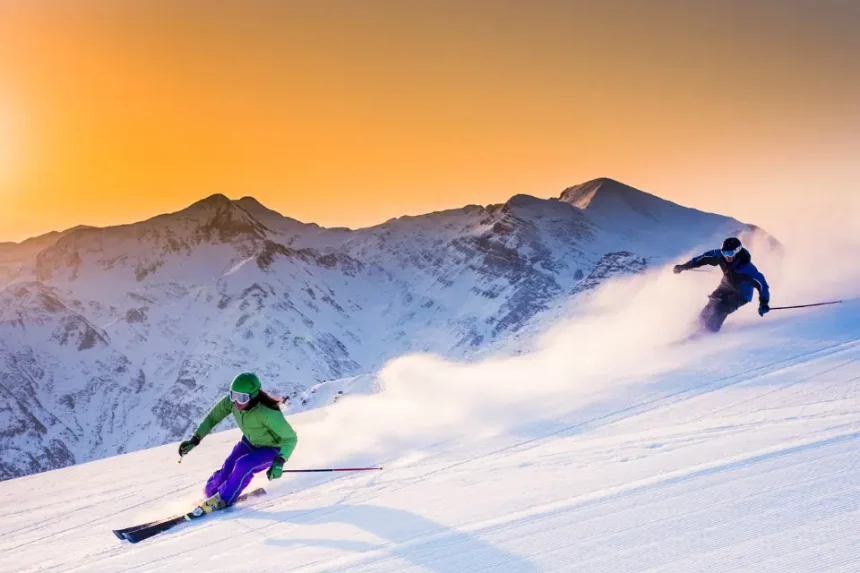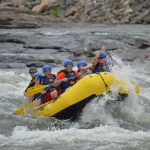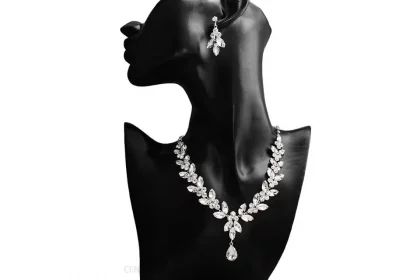Are you dreaming of hitting the slopes and skiing down a mountain? Skiing can be a thrilling experience that allows you to connect with nature and enjoy some intense physical exercise. Whether you’re a beginner, an intermediate or even an advanced skier, skiing is a sport that anyone can enjoy. But before you get started, there are some things you need to know.
A beginner’s guide to skiing can help you get all the information you need to ensure your skiing experience is a successful and enjoyable one. Here, you’ll find out what you need to know about skiing, from the basics of how to dress for the slopes, to the types of equipment you need, and even some tips for navigating the mountain. So, if you’re ready to start your skiing adventure, let’s get started!
1. What You Need To Know Before You Go Skiing
Before you start planning your skiing experience, there are a couple of things you need to know. First, you need to know how the equipment works and what the different types are. Then, you need to know how to stay safe while skiing and how to choose the right ski resort for you. Once you know all this, you’re ready to head to the slopes! To begin, let’s talk about the different types of skis.
There are a few different types of skis to choose from, including alpine, freestyle, and cross-country skis. Alpine skis are the most common type of ski, and they’re typically best for beginners. Freestyle skis are designed for people who are more into acrobatic or technical moves. Cross-country skis are the longest skis out of these three types, and they’re designed for people who want to go for long skiing tours. Next, you need to know how to stay safe while skiing.
This means being aware of your surroundings, staying hydrated, and taking care of your equipment. You should also remember that skiing is a high-impact sport, so you will likely experience some muscle soreness after skiing. If you experience pain that isn’t going away after a day or two, you should speak with a doctor.
2. The Basics of Skiing
Skiing is an outdoor sport that involves going downhill on skis. Skiing can be done recreationally, competitively, and in a variety of different ways and styles. When skiing, you will strap two skis to your feet, and you will use your legs to push against the skis, sending you flying down the mountain. Skiing can be done almost anywhere that has snow and mountains, and it can be done either competitively or recreationally.
While there are some basic similarities between all types of skiing, each discipline has its own rules, equipment, and techniques. There are several different types of skiing. Alpine skiing is the most popular type of skiing, and it is done on alpine skis from a high mountain. Alpine skiing can be done either competitively or recreationally. Alpine skiing can be done either competitively or recreationally. Alpine skiing can be done either competitively or recreationally.
Alpine skiing can be done either competitively or recreationally. Alpine skiing can be done either competitively or recreationally. Alpine skiing can be done either competitively or recreationally. Alpine skiing can be done either competitively or recreationally. Alpine skiing can be done either competitively or recreationally. Alpine skiing can be done either competitively or recreationally.
3. How to Dress for the Slopes
When you go skiing, you’re going to be outside in cold temperatures. This means you will need to bundle up properly so that you stay warm, even during the coldest of days. The first piece of clothing you should wear is a ski jacket. A ski jacket is designed to be water-resistant and insulated, which makes it the perfect choice for skiing.
For the bottom half of your body, you should wear ski pants. Ski pants should be made of thick material and should provide warmth, protection from the cold and snow, and longevity. For the top half of your body, you should wear a thick and warm sweater, a ski shirt, a thermal undershirt, ski gloves, thermal socks, and a ski hat.
4. Types of Equipment Needed for Skiing
There are several types of equipment you will need when skiing. For the feet, you need skis, boots, and ski bindings. The skis are what will keep you balanced and upright as you ski down the mountain and are designed for different types of terrain.
Ski boots are designed to be snug against your feet and to provide warmth, support, and comfort. Ski bindings help you to keep your skis attached to your feet as you ski. For the upper body, you need a ski jacket, ski pants, a thermal sweater, a ski shirt, ski gloves, and a ski helmet. A ski helmet is designed to protect your head and face from falling objects and accidents while skiing.
5. Tips for Navigating the Mountain
Before you head to the mountain, make sure you know how to navigate the ski resort. This means knowing where the ski rental shops are, where you can rent ski equipment, where you can purchase food and beverages, and where the ski school is located. Knowing all of this information ahead of time will help you navigate the mountain with ease and avoid getting lost. Once you get to the mountain, remember that skiing is a very visual sport.
This means that you need to be able to see where you are going. You should try to get to the mountain early so that you can get a good view of the trails and conditions. If it is foggy or cloudy, don’t worry. Ski resorts often provide a lift service called “snow cat skiing”, where they will take you up the mountain and provide you with a lift ticket for a discounted rate.
However, you should note that snow cat skiing is not the same as being able to see the same views you would see on skis, so it’s best to go as early as possible when there is no fog or clouds.
6. Tips for Staying Safe on the Slopes
When you head out to the slopes, you need to make sure to stay safe. This means being aware of your surroundings, staying hydrated, and taking care of your equipment. You should also remember that skiing is a high-impact sport, so you will likely experience some muscle soreness after skiing. If you experience pain that isn’t going away after a day or two, you should speak with a doctor.
To stay safe while skiing, you should try to avoid distractions while you are skiing. This includes things like your phone, headphones, and any other device that can be a distraction. You should also be aware of your surroundings while skiing, including the weather conditions, the terrain around you, and any signs that may indicate a hazard. You should also try to avoid drinking alcohol while you are skiing.
7. Tips for Finding the Right Skiing Resort for You
When you decide which skiing resort you want to visit, you need to pay attention to a few things. First, you need to decide which type of skiing you will be doing. If you are a beginner, you should choose a resort that is best for beginners. If you are interested in cross-country skiing, you should choose a resort that provides trails for cross-country skiing.
You also need to determine how far away the resort is from where you live. You should choose a resort that is around a few hours away from home so that the trip there and back isn’t too long. You should also look at the resort’s amenities and reputation.
When you are choosing a skiing resort, it is important to find one that is right for you. You should pay attention to the details listed above to help you find the right resort for you.
8. What to Pack for Your Ski Trip
If you are going on a ski trip, you need to pack the right items. This includes things like warm clothes, a ski jacket, ski pants, a sweater, thermal socks, a ski shirt, ski gloves, a ski helmet, a ski bag, extra batteries, a camera, sunscreen, and a water bottle.
You should try to pack as light as possible, and you shouldn’t overpack. You should also remember to bring items that are appropriate for all types of weather conditions, including a rain jacket. If you are new to skiing, you should also pack items

















